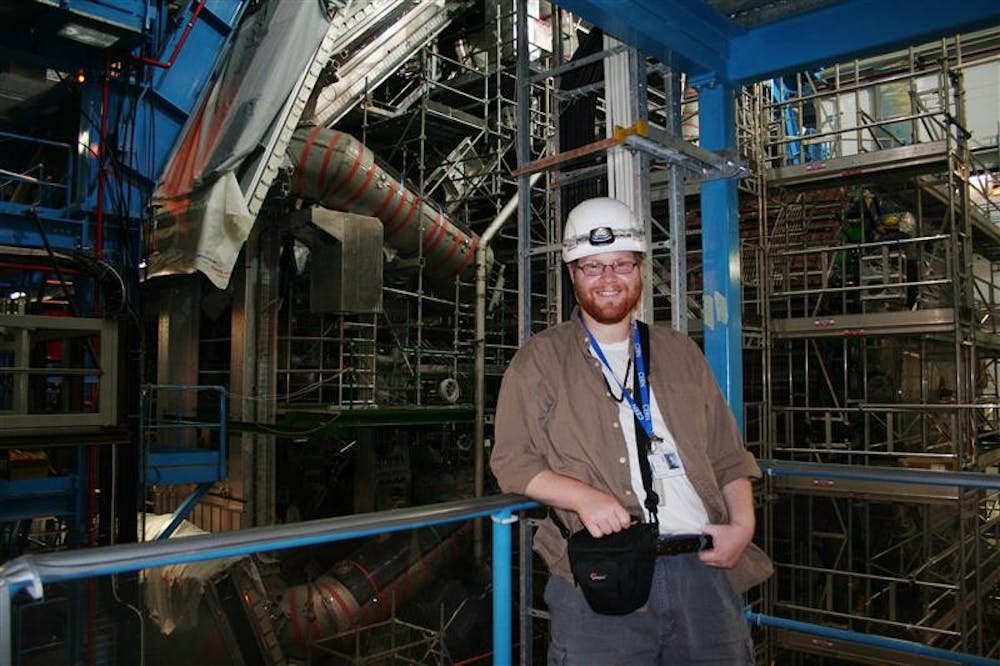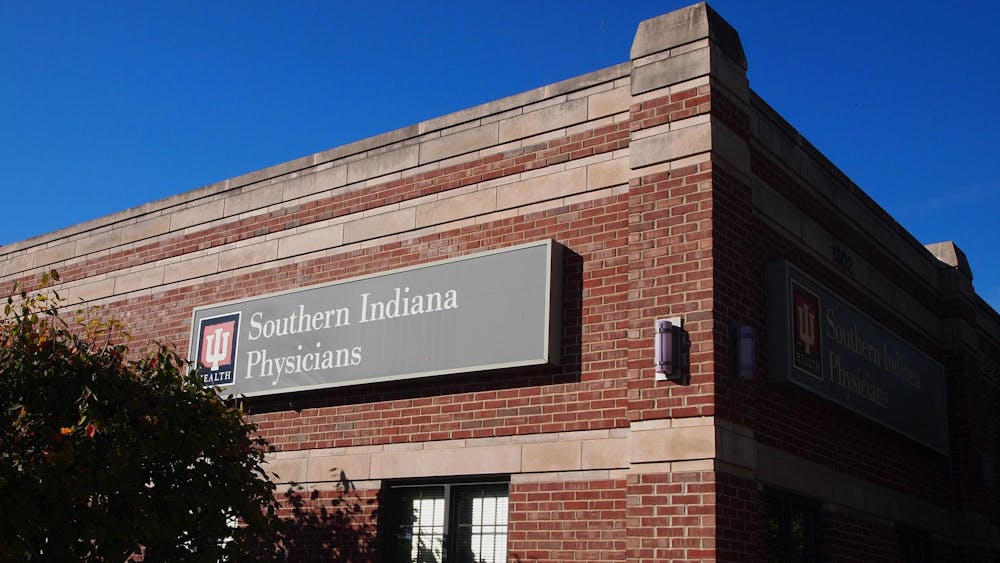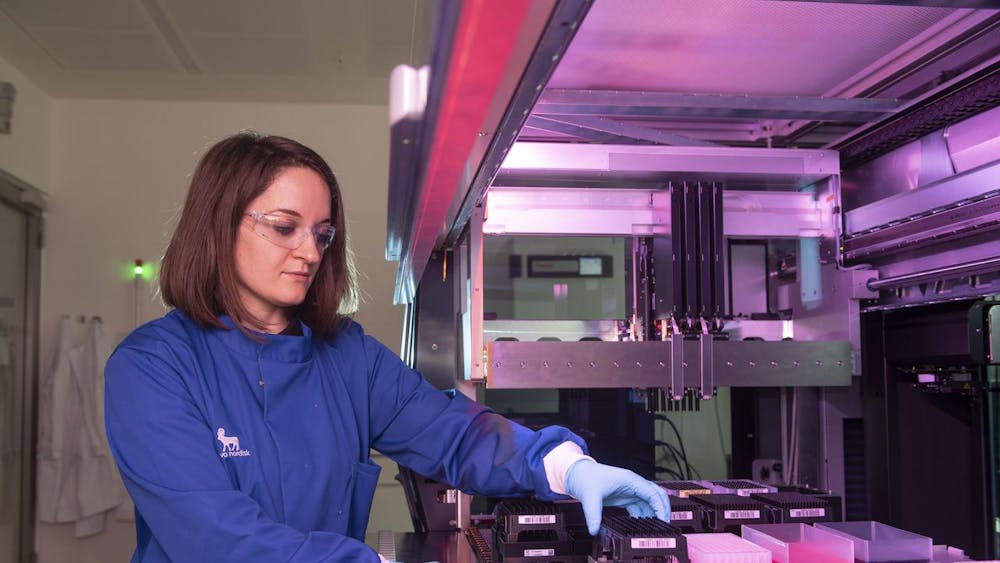While most of America slept soundly, still hours away from an alarm’s clamor, Denver Whittington fired off an e-mail to IU last week under the subject heading: “LHC Success!”
Since April 2007, Whittington has been living in the small French town of Ferney-Voltaire, a long way from his hometown of Anderson, Ind.
Ferney-Voltaire is just minutes away from the Large Hadron Collider, part of the CERN laboratory, where he works as a deputy software coordinator.
The LHC passed its first test run Sept. 10 with flying colors. The machine was built in hopes of unlocking some of the universe’s mysteries, so naturally Whittington, a 26-year-old IU graduate student in elementary particle physics, was thrilled to witness the event first hand.
“WOOT!” he wrote in the e-mail. “Beam has successfully made it all the way around the ring and continued through past its injection point.”
The beam Whittington referred to is one made of protons, called a “hadron,” that had for the first time made a full circle through a 27 kilometer ring, a component of the largest particle accelerator to date.
Thousands of magnets guide the beam along its course. The direction must be precise because the ultimate goal is to cause a head-on collision between two subatomic particles inside the ring. One beam moves clockwise, while the other simultaneously goes in a counter-clockwise direction.
So what’s the point of smashing tiny specks into one another? Why all the excitement?
Whittington said the data he expects to gather from the LHC will help him to both finish his dissertation and gain a better understanding of the universe.
He’s looking into the puzzling nature of gravity, he said, to learn more about the force. For example, it might be possible that gravity extends into undiscovered dimensions.
His is just one of countless minds worldwide bubbling with theories to be advanced, to be proved, or even to be disproved by the collider.
For example, the LHC is working to observe the Higgs boson, or “God particle.” It is the only particle in the Standard Model – the widely accepted theory on how matter and energy work – that has not been observed by scientists to date.
If it is observed, then the Standard Model is correct; if the particle is not observed, then the scientific community must seriously rethink what has been assumed as true, Whittington said.
The potential for discovery is not the only remarkable feature of the LHC. It is already a historic feat of engineering, said Harold Ogren, an IU professor of physics and a CERN fellow.
Ogren called the LHC “a machine of superlatives” during a colloquium on Sept. 10 in Swain Hall West.
He addressed the misconceptions and significance of the collider to the general public.
Ogren – along with his IU physics colleagues Fred Luehring, Hal Evans, and Pauline Gagnon – also helped with components of the ATLAS experiment.
“We are very happy campers,” Ogren said.
Whittington said the beam tests since Sept. 10 have gone so smoothly that the first beam collisions have been pushed up from late October to the middle or end of this week.
He plans to work on the project for at least another year and a half, but that could change depending on the findings.
When asked to express how it feels to be so close to such a historic event, Whittington was at a loss for words.
“It’s just really cool to be here,” he said.
From corn to CERN
One Hoosier’s on-deck account of the Large Hadron Collider test run

Get stories like this in your inbox
Subscribe





